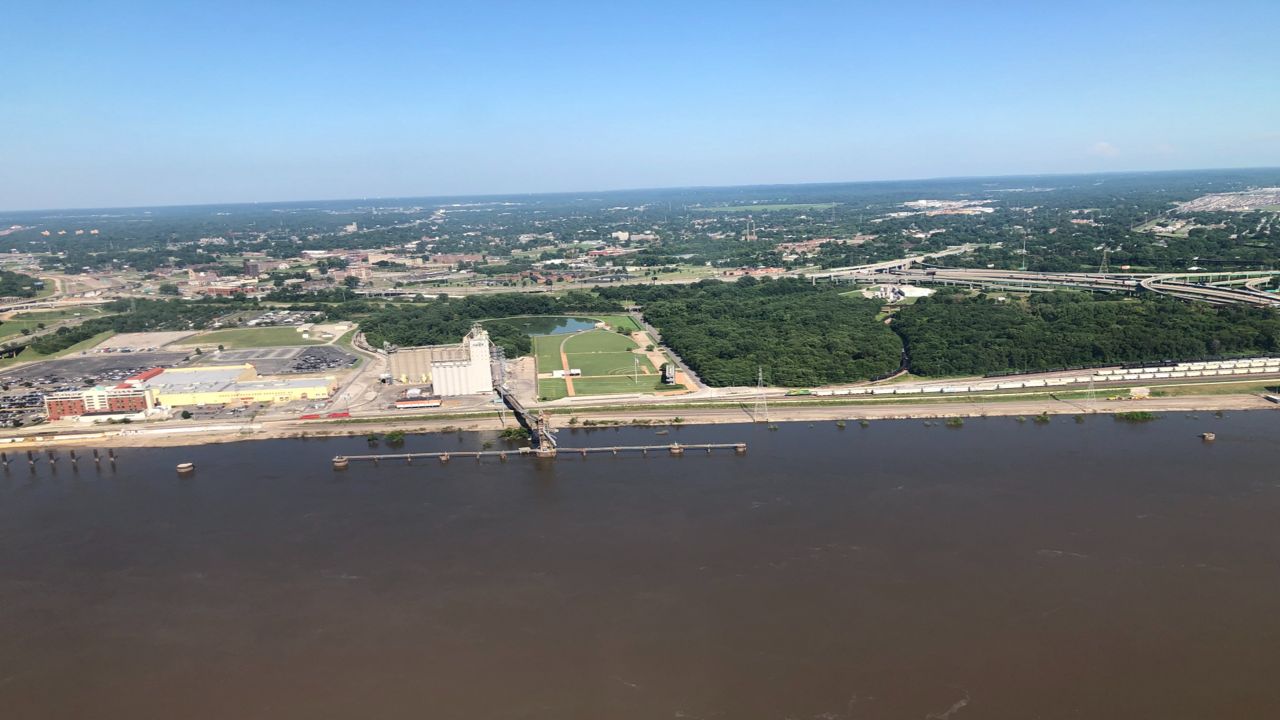DES MOINES, Iowa (AP) — The federal government said Friday that it will distribute $60 million among 12 states that have waterways that flow into the Mississippi River to help them control farm runoff and other pollution that contribute to a dead zone in the Gulf of Mexico.
The money comes from the infrastructure law that President Joe Biden signed in November, the Environmental Protection Agency said.
Radhika Fox, EPA assistant administrator for water, made the announcement with Iowa Secretary of Agriculture Mike Naig in Des Moines.
“The Mississippi River and Gulf of Mexico watershed is an iconic ecosystem that millions of Americans depend on for drinking water, agriculture, recreation and economic development and it is essential that we reduce nutrient pollution that harms water quality,” Fox said.
Naig is the co-chairman of the 12-member Mississippi River/Gulf of Mexico Watershed Nutrient Task Force. It was designed to cut the amount of phosphorous and nitrogen that flows from rivers and streams into the Mississippi River and causes the Gulf's dead zone.
In the Gulf, the nutrients feed an overgrowth of algae that eventually die and sink to the bottom, using up oxygen from the ocean floor up as they decompose.
The National Oceanic and Atmospheric Administration said this month that the dead zone this year is expected to be about 5,364 square miles (13,893 square kilometers), which would be about 15% smaller than last year’s measurement.
In 2001, the task force set a long-term goal of reducing the dead zone, or hypoxic area, to 1,900 square miles (4,920 square kilometers), which is about 35% of its current average area.
The $60 million will be distributed over the next five years. Each of the 12 states will receive $965,000 this year and $748,000 for each of the next three years. In 2026, the fifth year, each state again will receive $965,000.
The states are Arkansas, Illinois, Indiana, Iowa, Kentucky, Louisiana, Minnesota, Mississippi, Missouri, Ohio, Tennessee and Wisconsin.
The money was attached to an EPA memorandum that provided guidance for how states could use the funds. It includes buying agricultural equipment such as cover crop seeders that can be shareable across thousands of acres, deploying remote-sensing tools to help identify critical sources of contaminants, implementing continuous real-time water quality monitoring and developing or revising numeric nutrient criteria and water quality standards.
Money can also be used for farmer-led education, training and demonstrations of on-farm methods to retain nutrients in the soil.
Iowa is often criticized because it has a voluntary nutrient reduction strategy that allows farmers to decide whether they want to implement measures that could reduce farm runoff of fertilizer, nitrate and other water contaminants.
Hugh Espey, the executive director of environmental group Iowa CCI, said the funding isn't likely to make a big difference until Iowa develops policies that stop the rapid growth of livestock confinement barns that house millions of chickens and hogs.



